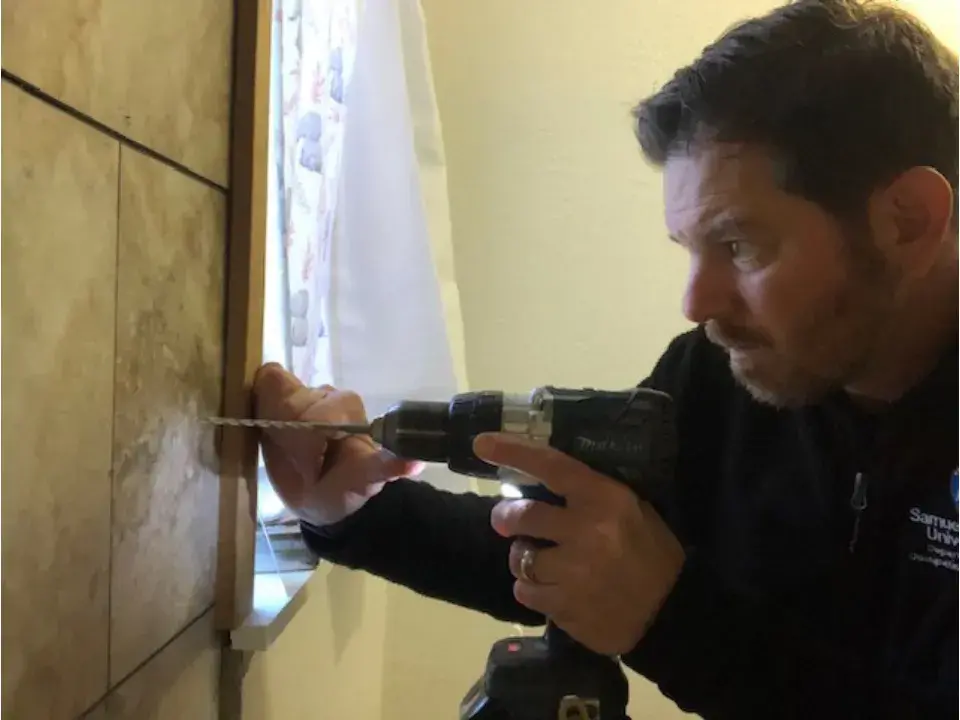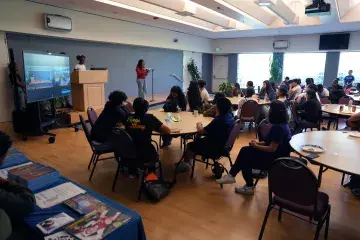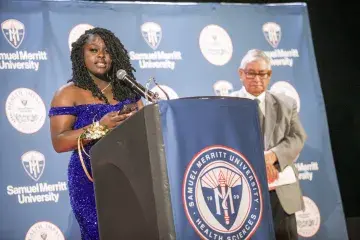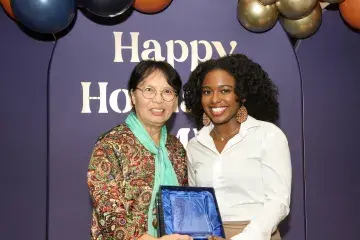Rebuilding Together

The COVID-19 pandemic lockdowns that began in 2020 affected the lives of everyone in unexpected ways. For students in Samuel Merritt University (SMU)’s Doctor and Masters of Occupational Therapy program (OTD and MOT), opportunities for fieldwork disappeared. Dr. Domenique Embrey, assistant professor and academic fieldwork coordinator in the Occupational Therapy department, remembers, “at that time, we had lost so many clinical placements. Hospitals couldn't take students, nursing homes couldn’t, and we couldn't put our students in those dangerous situations.” Dr. Embrey looked for alternatives in less traditional settings. She says colleagues at the American Occupational Therapy Association (AOTA) suggested partnering with Rebuilding Together.
Rebuilding Together is a nonprofit organization established in 1973 in Midland, TX, with a mission to rehabilitate housing and community facilities for seniors, veterans, and disabled people, particularly in underserved communities. The organization has grown to over 170 local affiliates across the United States. In 2001, Rebuilding Together partnered with AOTA for their “Safe at Home” program, which utilizes occupational therapists to assess homes for modifications that accommodate clients’ needs and then provide follow-up consultations. AOTA connected Rebuilding Together East Bay-North (RTEBN) with SMU to develop a pilot internship program for OT students.
Dr. Embrey recalls, “When we connected with Rebuilding Together, they said, ‘We'll take as many students as you have,’ and they would only be seeing clients one at a time with masks or other precautions. For that first rotation, I think we sent eight students out, and Samuel Merritt paid to hire four extra professors to supervise them.” More than twenty OTD and MOT students have participated in the program since the partnership began. Several have completed both their clinical fieldwork and capstone projects with Rebuilding Together.
JW Frye, executive director of RTEBN, describes the partnership as “a match made in heaven” and calls it student-led and student-innovated. Frye says he prioritized working with Samuel Merritt for the project because of SMU’s dedication to having a diverse student population with a wide variety of lived experience. “It would be almost criminal not to leverage that experience,” he says.
Most OT students completing their fieldwork with Rebuilding Together participate beyond their clinical hours. Frye notes that “80% of them will do some additional volunteer work just for home visits or something like that. And then 20 to 30% are coming after they've done their fieldwork for additional follow-up volunteer days, or they've built relationships with our neighbors.”
Samantha Mong, OTD ‘22, was one of the first SMU OT students to work with RTEBN on a three-month fieldwork assignment. Despite the unconventional setting, Samantha was open-minded about the experience. She and her fellow students worked in small groups to perform assessments for several of Rebuilding Together’s clients. Samantha says the on-site assessments she performed were holistic. “We look at the environment. We look at the person, at their medical condition, and then look at the impact on how they engage in daily activities.” Although most of the projects extended beyond the duration of her assignment, the impact of the experience continues for Samantha.
“I have a client who is an 80-year-old lady who lives by herself,” she says, “and seeing her medical condition, we just felt like she would benefit from having therapists going into her home. Because we connected to her via Rebuilding Together, we then advocated for her to have therapy at home. We wrote a letter to her physician, and we did an assessment explaining our rationale on why we think she qualifies for home health services. Because she doesn’t have any friends or family nearby, the only way that she can potentially reach out to the community is by having us going into her home and then advocating for her needs.”
Samantha says the most important takeaway was realizing the broad scope of untapped possibilities available for occupational therapists. “I feel like it really opened up my horizon in terms of knowing what we can do outside of the medical setting,” she says.
“I just didn't even imagine that we can have a role in the community. I know so much more now about the work and the value that we can bring.”
Tod Ehmann, OTD ‘23, is completing his OT capstone project with RTEBN following his fieldwork experience. Tod left a twenty-year career in general contracting to pursue occupational therapy. When the opportunity arose to work with Rebuilding Together, his background uniquely prepared him to bridge the gap between the building process and the occupational therapy process.
Tod’s capstone project is focused on fall prevention and involves adapting the Home Hazard Removal Program (HARP) standards developed by Washington University. He describes it as “an evidence based occupational therapy intervention. My focus is on looking at how that's going to be implemented, at how the occupational therapist is going to participate as a HARP-certified worker in the context of what Rebuilding Together East Bay-North already has in place.” Tod’s work will provide new protocols that can be replicated throughout Rebuilding Together’s nationwide affiliate network. RTEBN Executive Director J.W. Frye says the evidence-based approach will also help secure new funding streams for the organization’s efforts.
The collaboration between Samuel Merritt University and Rebuilding Together East Bay-North is already laying plans for next year. Frye says, “In the first quarter of 2024, we have another student coming in doing her capstone about creating a program that specifically addresses the needs of an adult diagnosed with ALS. We're now working with the ALS Association Golden West Chapter to pilot that project. With the ability to deliver a solution for people going through that process, the opportunity is endless. Those capstone students are setting the agenda for how we start to add evidence-based practices so that we can guarantee whole health outcomes.”


